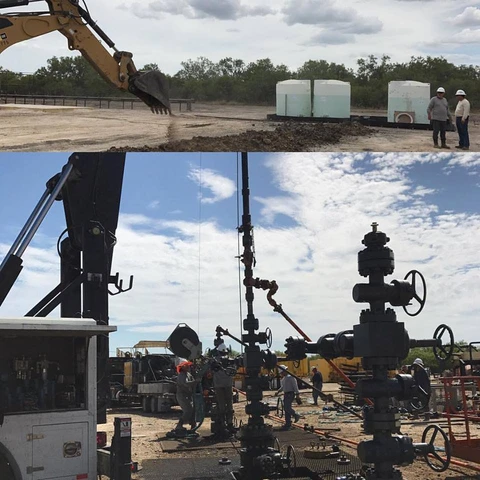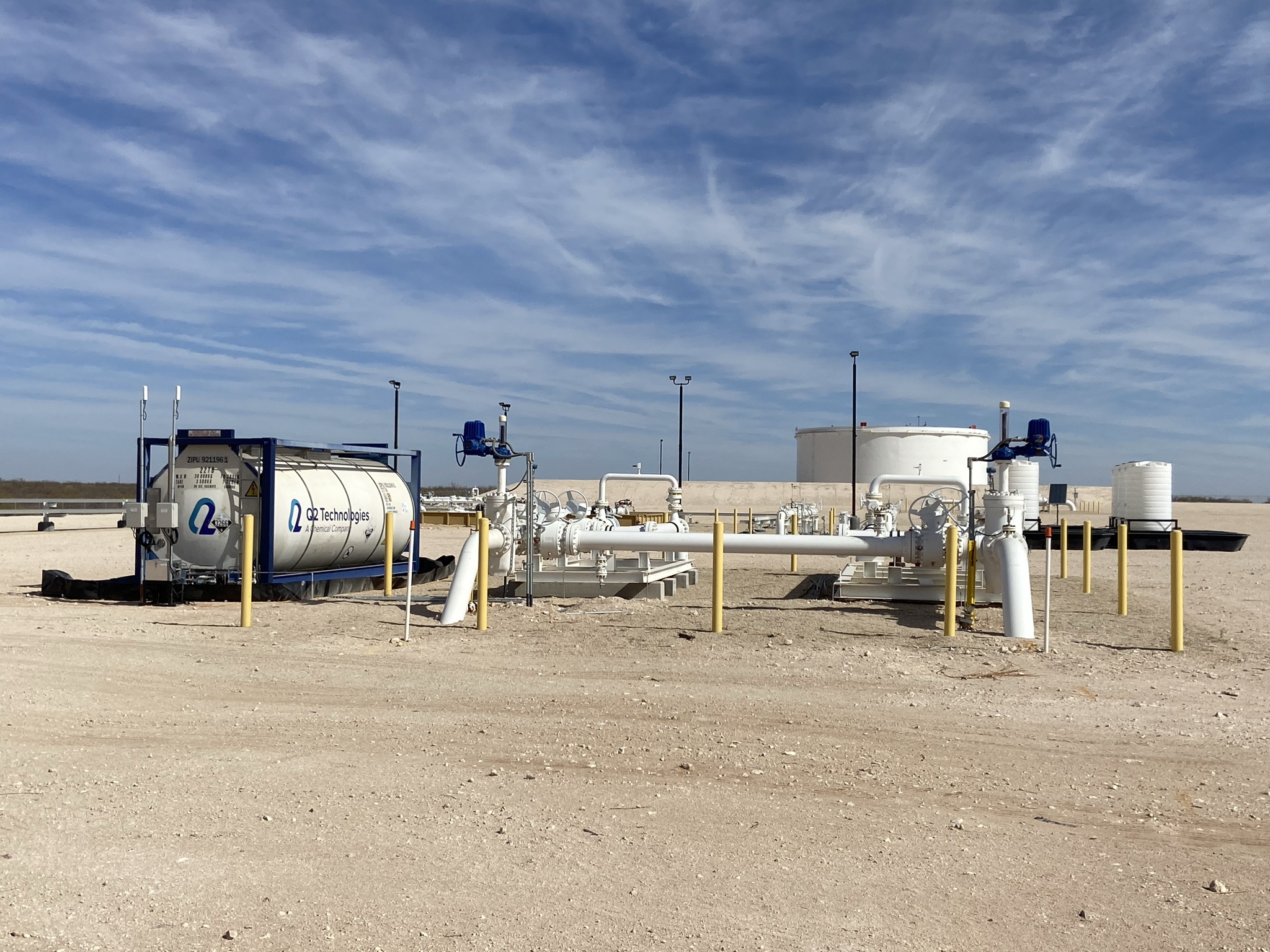
ANOTHER PRO-3™ NON-AMINE H2S SCAVENGER PROCESS UP AND RUNNING!
The heat is on in the Eagle Ford Shale as we supply our PRO-3™ Non-Amine H2S Scavenger Process to one more upstream application. Since we are proud of all our projects and pleased to help our clients get more value for their barrel, we want to share how it all looks as it is happening. On the first picture, a trench was being dug in preparation for injecting our PRO-3™ Non-Amine H2S Scavenger into our client’s oil stream. On the second one, the well flowback was being tested in order to start production.
After successful pilot testing and careful planning, all the steps were completed for our clients to start using the PRO-3™ process and get more value for their barrel. Today the project is completely operational and we expect to continue growing with them in the promising Eagle Ford Shale. Together with our partner Additive Direct Services, we brought with us a team of experienced professionals. We made sure that installation flowed smoothly and that operations were not interrupted. We will do the same in the next projects during the fall.
Learn more about Q2 Technologies and our commitment to quality.







